The 1930s were a formative period for documentary photography in the United States. The twin phenomena of the Great Depression and President Franklin Roosevelt’s New Deal gave photographers a surfeit of material to shoot. Moreover, changes in camera technology meant that portable and relatively inexpensive cameras could be taken almost anywhere. Photography clubs multiplied; and shared darkrooms meant that both vocation and avocation photography became affordable and tremendously popular. From the standpoint of the social historian, the most important intervention was institutional: starting in 1935 a government agency, the Farm Security Administration (FSA), began hiring photographers and dispatching them across the country to document the lives of ordinary people. Some of the most prominent visual artists of the period lent their talents to this endeavor – Dorothea Lange, Walker Evans, Ben Shahn, Arthur Rothstein to name a few – and at the project’s conclusion a decade later they had captured more than 170,000 images, which are now preserved and accessible in the Library of Congress in Washington, DC.
The size and scope of this archive forms something close to a comprehensive visual record of the era, yet attention has remained focused on a relatively small swathe of photographs documenting hard pressed farmers and migrant workers. Indeed, the era’s most iconic image, Dorothea Lange’s portrait “Migrant Mother,” can stand in for this entire subset as it successfully conveys human tenacity and dignity in the face of the dispossession and hardships of the Depression (see Figure 1). Lange and other FSA photographers who later enjoyed fame as fine art photographers overshadow many other talented artists worthy of recognition; and the theme of the rural workers, in similar fashion, has crowded out our awareness and appreciation of other subjects amply documented in the FSA’s remarkable body of work.
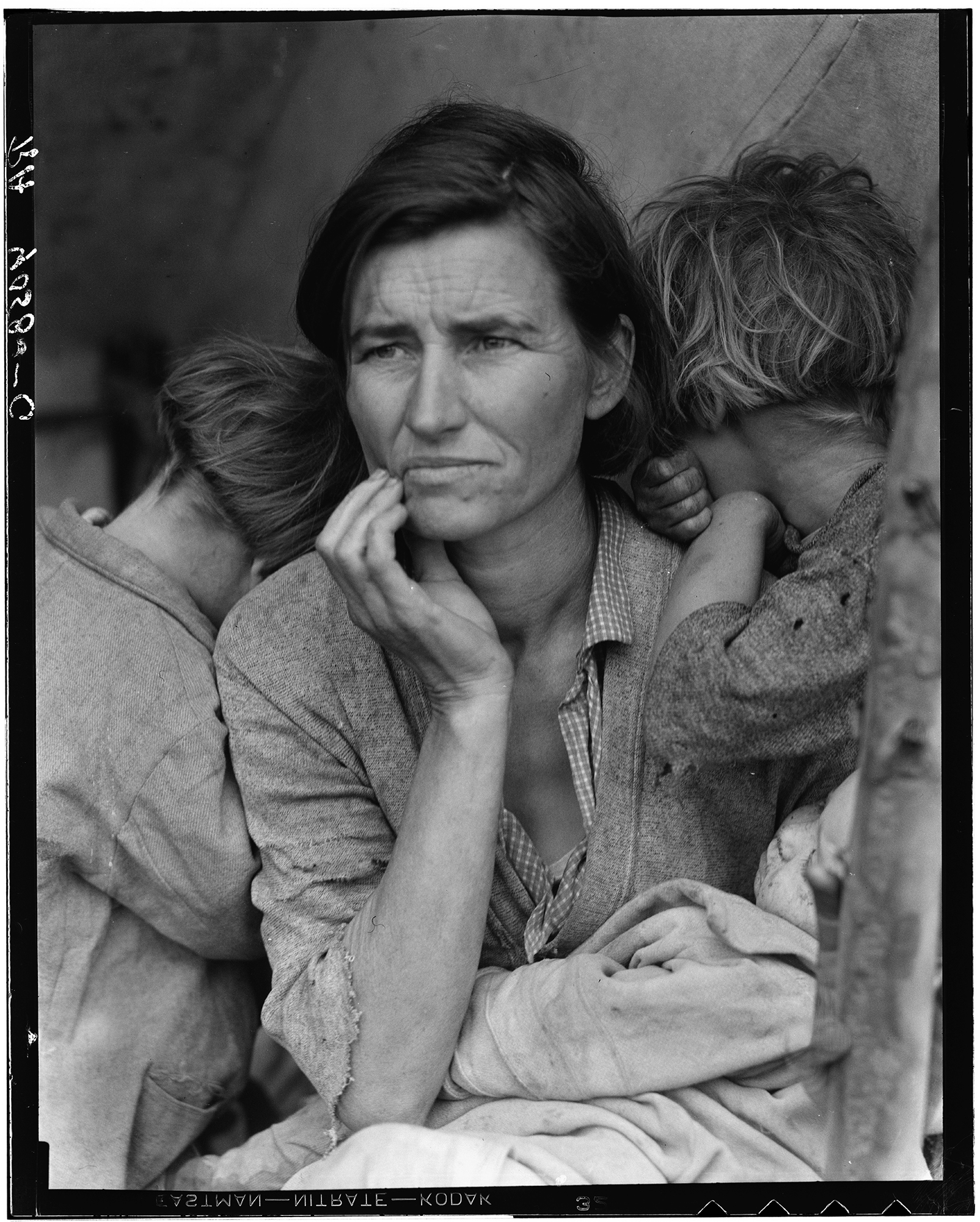
One underappreciated aspect of the FSA’s photographic endeavor was the opening it afforded African American photographers and the ways the project allowed for a critique of existing racial mores and practices. The most accomplished and best-known black photographer hired by the FSA was Gordon Parks, a self-taught but already successful portraitist operating out of Chicago. Several of Parks’ FSA photographs are noteworthy, and a much larger number explore civil rights-oriented themes in subtle and nuanced ways, but his masterpiece from this period is the 1942 photo “Washington DC Government Charwoman” (see Figure 2). This image is part of an extended photo essay Parks shot on Mrs. Ella Watson, who had cleaned federal offices for nearly three decades and, significantly, had been subjected to the renewed segregation of Washington brought in by southern President Woodrow Wilson. Depicting a stoic Mrs. Watson, mop and broom in hand in front of a large American flag, Parks consciously played off Grant Wood’s 1930 oil painting American Gothic” (see Figure 3) to both champion an ordinary domestic laborer but also drive home a point about the centrality of the black working class to the American economy. Indeed, when he later exhibited this print, he made the connection explicit, borrowing Wood’s exact title.
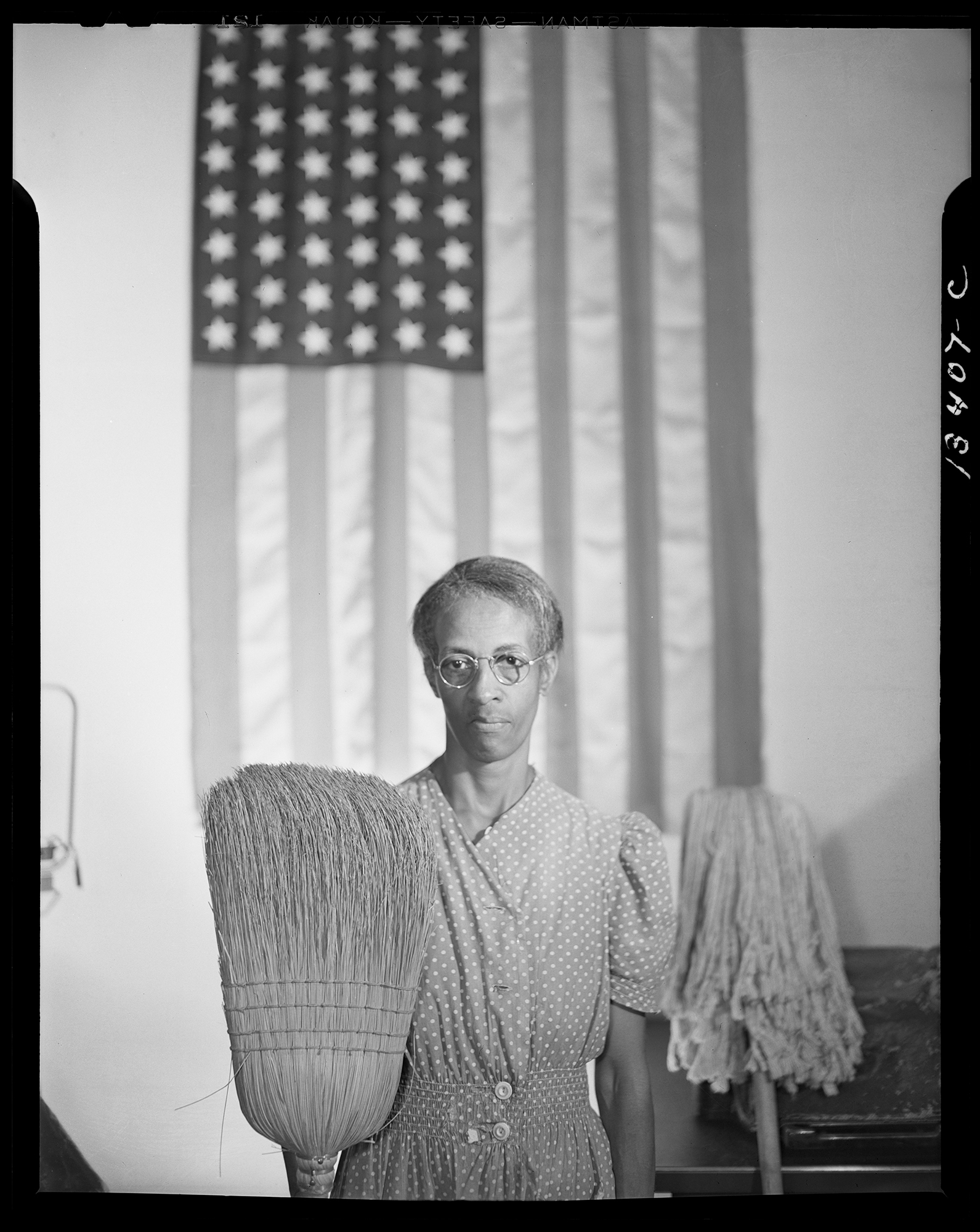
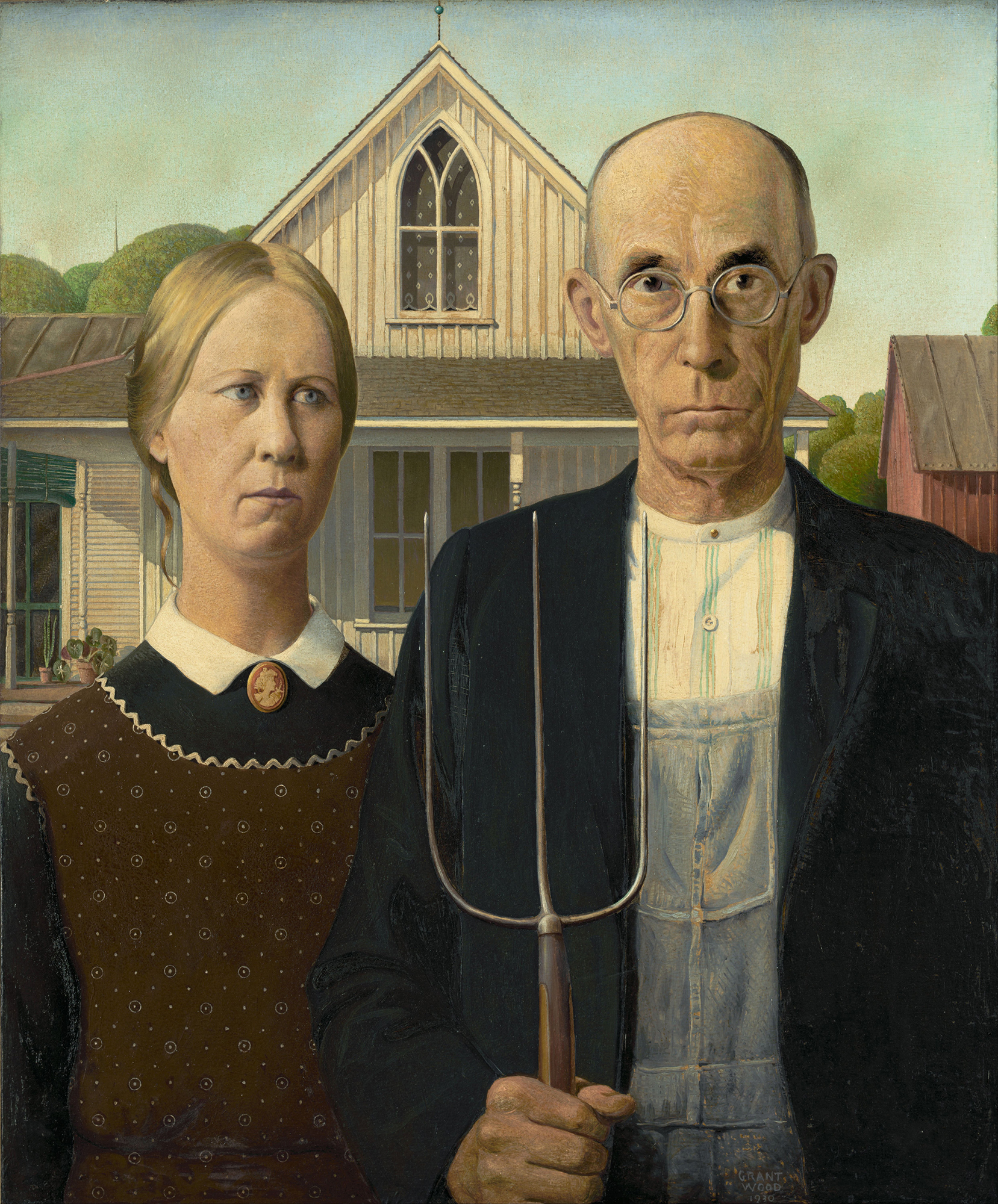
The other photographs in Parks’ photo essay depict various aspects of Mrs. Watson’s life – her living conditions, neighbors, work regime — and anticipate some of the journalistic work that Parks pursued in the postwar period. Significantly, this series also includes one of the only pictures of an Asian American in the FSA archives, a portrait of Johnnie Law in the laundry he operated under Watson’s apartment (see Figure 4). Looking slightly off camera, cigarette dangling from his mouth, piles of wrapped laundry in brown paper in the foreground, Law’s place in the American mainstream is staked out by the portrait of Roosevelt on the calendar over one shoulder and a small American flag next to the other.
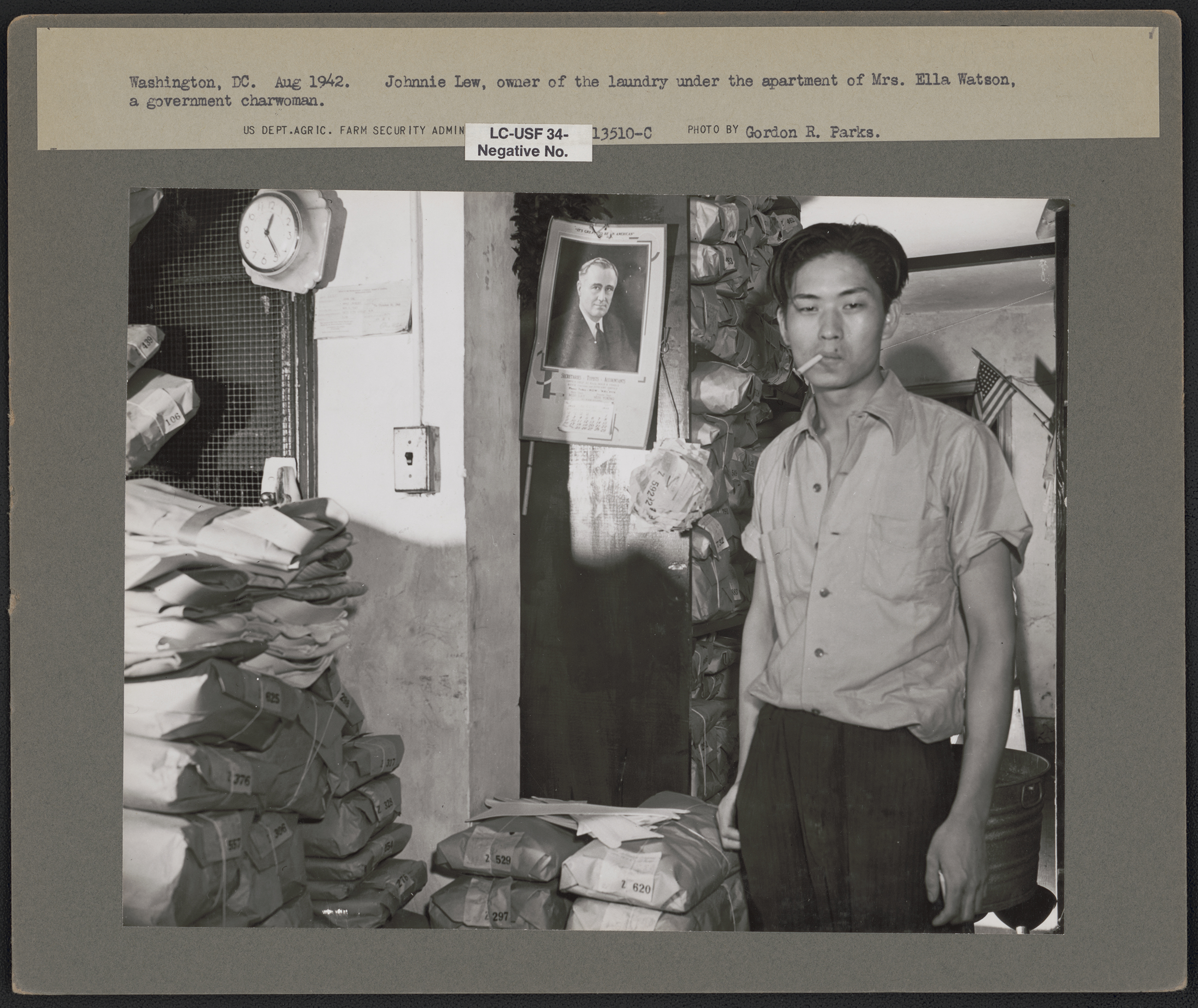
If the FSA provided an important opportunity to a black photographer such as Gordon Parks, it went even further in its employment of women, several of whom including Lange, used their cameras and the platform afforded by the government to document and critique racial inequality. Perhaps the most pointed work in this vein came from Marion Post Wolcott, a sadly underappreciated photographer who made some of the most enduring images of the rural South during her time with the FSA. A standout among the more than 9,000 negatives she contributed to the archives is her 1939 picture of a black man entering a segregated movie theater in Belzoni, Mississippi (see Figure 5). Beautifully composed, the image is broken by the diagonal line of the stairs leading up the cheap seats reserved for African Americans; a Jim Crow sign with an arrow neatly parallels this line, and a Dr. Pepper advertisement contributes a touch of whimsy to the photograph. Wolcott considered it one of her best pictures.
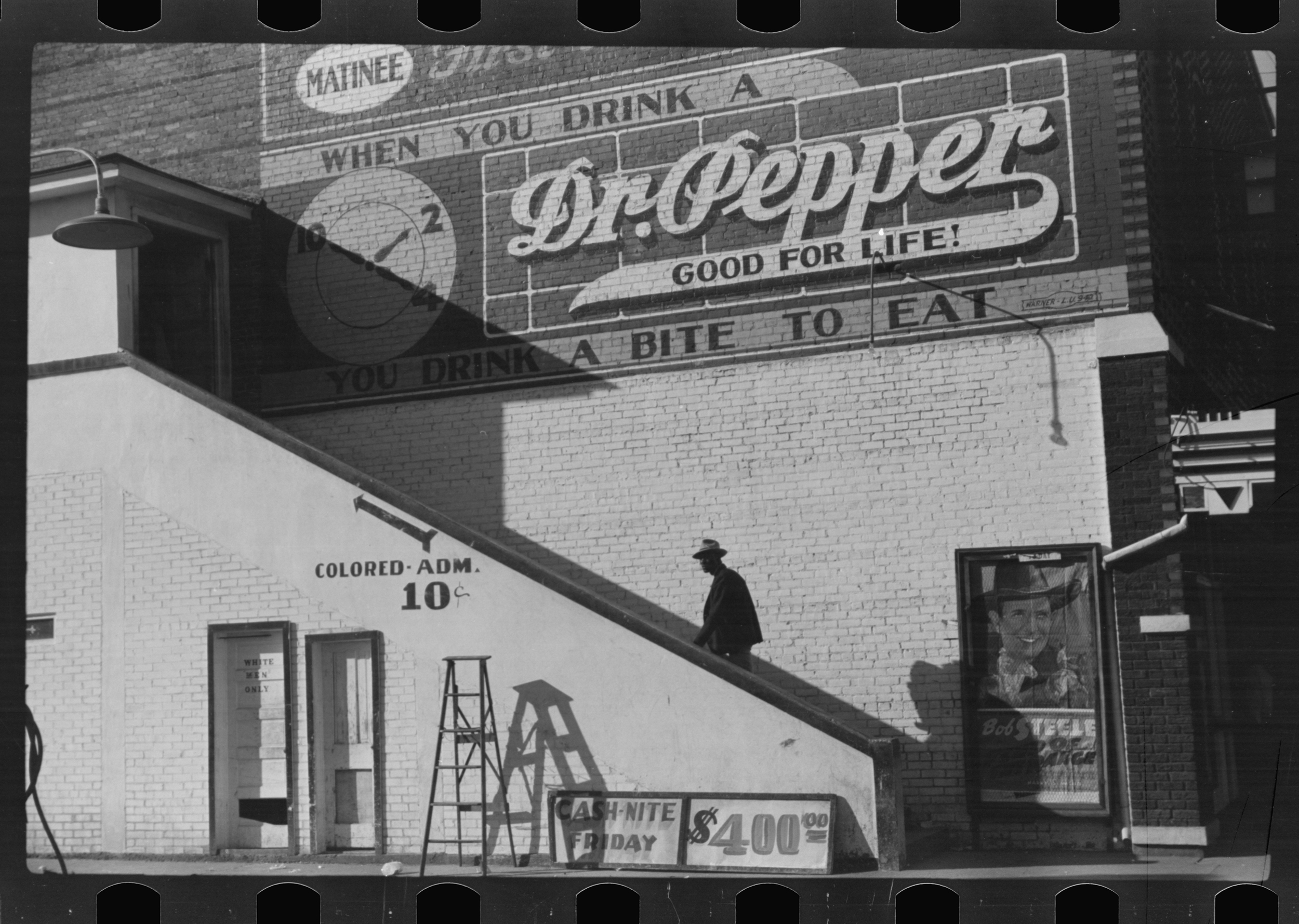
Like many of the FSA’s better-known artists, Wolcott spent a significant amount of time in the rural South photographing tenant farmers, sharecroppers, and poverty-stricken families caught in the exploitative grip of the plantation system. Yet she devoted prodigious energy to documenting their lives away from the cotton and tobacco fields, celebrating the autonomous cultural spaces they carved out in bars, taverns, and juke joints. Indeed, one of her more remarkable series comprises more than a dozen shots of the inside of a Clarksdale, Mississippi juke joint (see Figures 6 and 7). While blues scholars and musicologists have delighted in these images, they have eluded a larger audience. In the first, a well-dressed couple high steps while other dancers and observers fill the remainder of the frame. In the second image, a woman in heels dances ecstatically before a clearly appreciative audience that includes, unexpectedly, a white uniformed policeman – perhaps an escort for Wolcott as she ventured beyond the veil that normally separated black working-class culture from the gaze of the dominant society. In both photos, and throughout the extraordinary series, the subjects emerge in dramatic contrast to the shots made famous by Lange or Walker Evans of downtrodden agricultural laborers in the fields or at gin mills or plantation commissaries. They celebrate a vibrant cultural world fashioned in the midst of poverty and oppression.
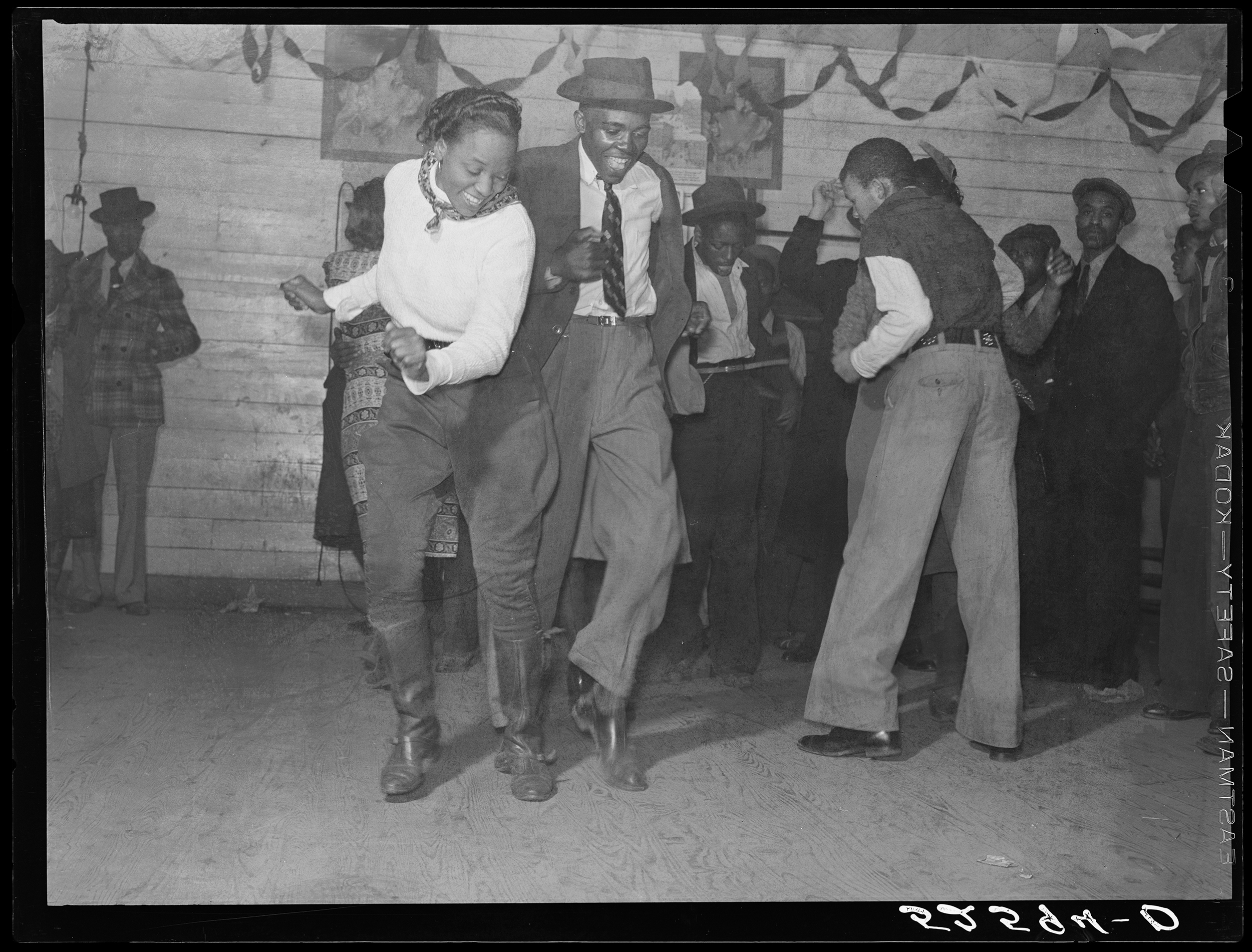
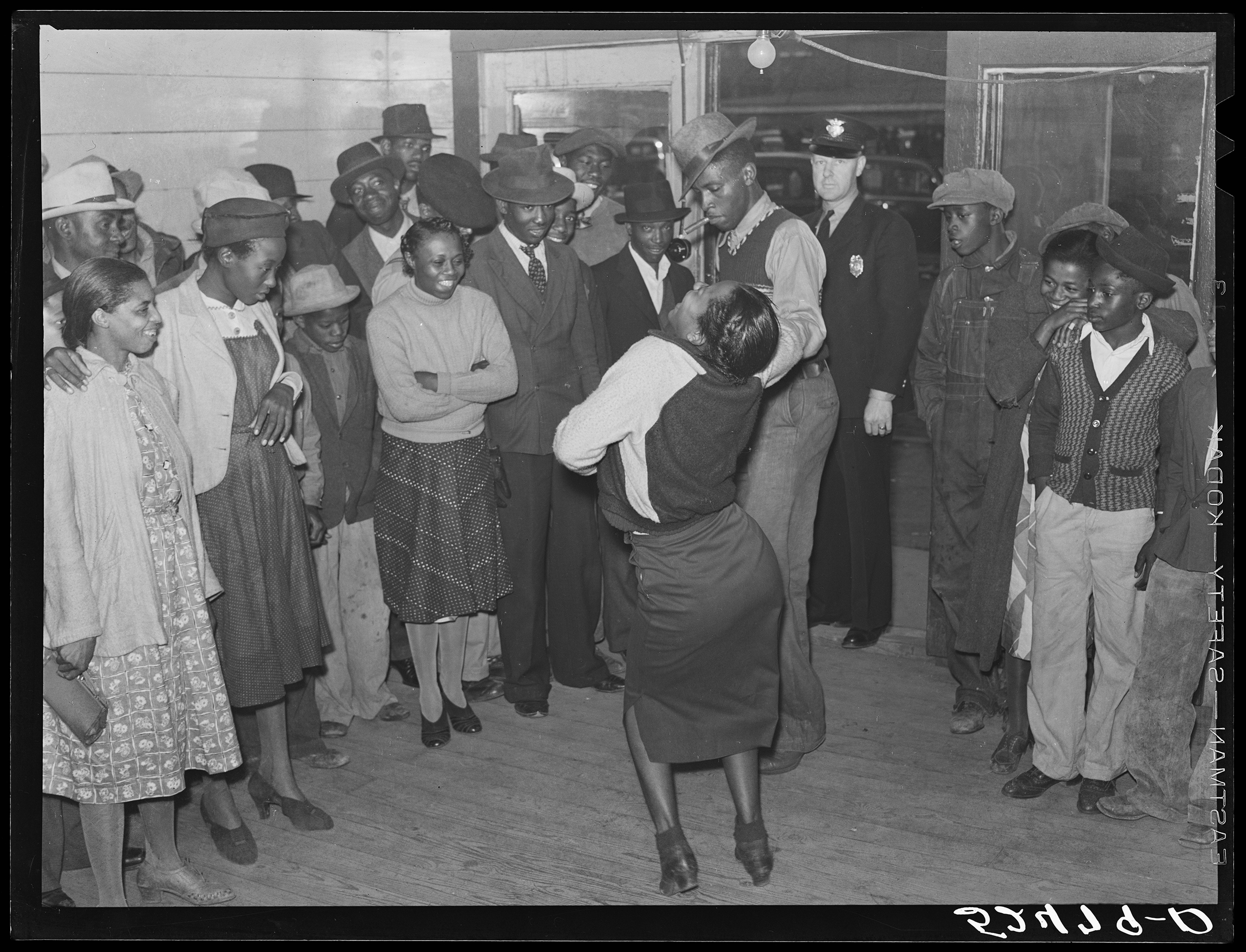
Several other FSA photographers documented ordinary Americans “having fun,” celebrating their subjects’ vivacious embrace of life amidst the very real hardships of the depression decade. Russell Lee – again an often overlooked member of the FSA team – made an exceptional series of street portraits on Chicago’s Southside, capturing black Chicago at play. He was especially drawn to clothing and attitude, what we might call “Stylin,” as exemplified in his 1941 portrait of five boys posing in their Easter finery on what appears to be a 1936 Packard (see Figure 8).
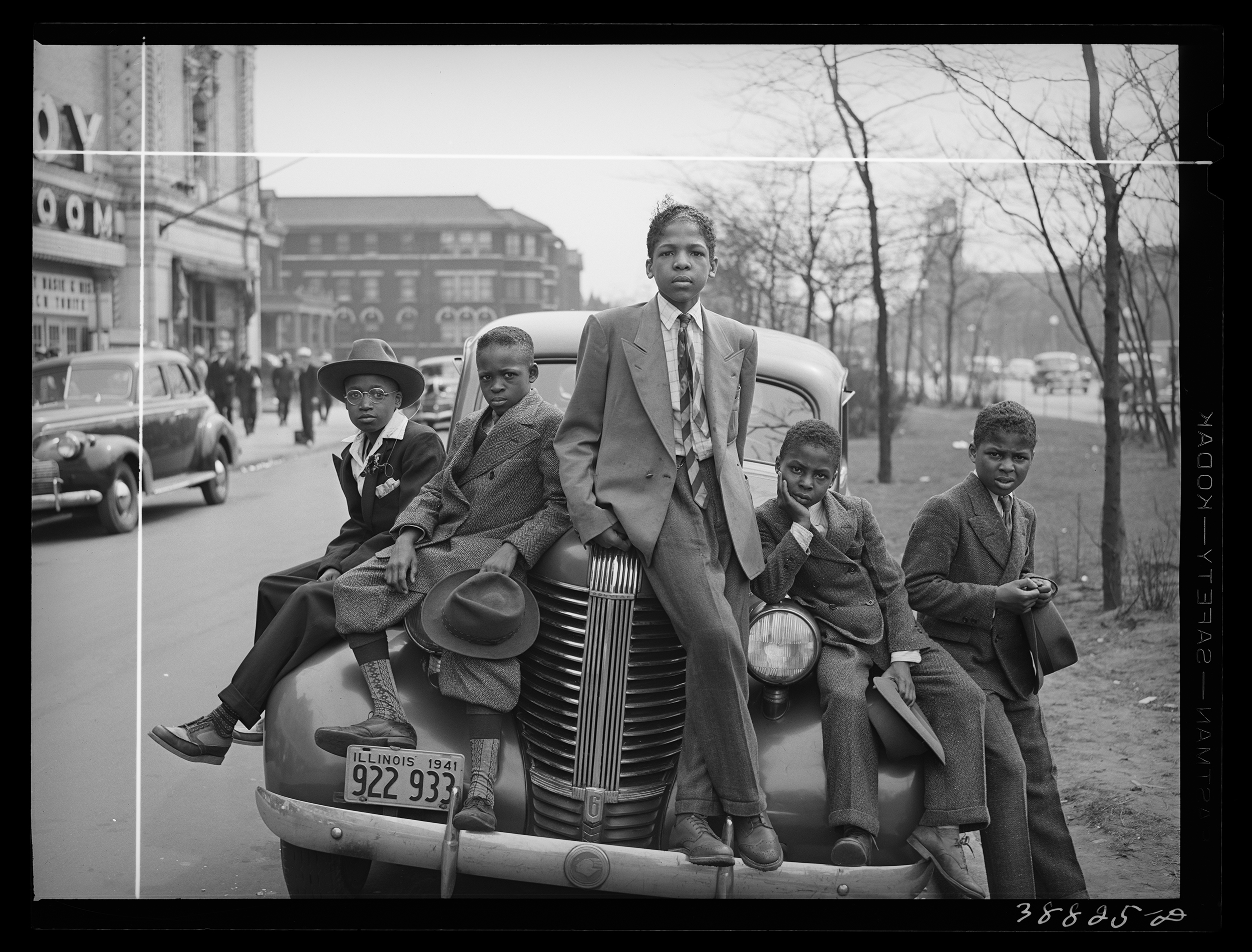
However, it was the FSA’s female photographic corps that truly excelled in documenting social and cultural life. Marjory Collins had worked as a staff photographer for New York City magazines in the early 1930s, often putting up with abuse and even sabotage from male colleagues who felt women had no place in the dark room or out on assignment. FSA employment gave her the freedom needed to blossom as a visual artist. Some of her best work, shot in the early days of defense mobilization following the 1941 attack on Pearl Harbor, focused on the entry of women into munitions factories. Quite different than the posed shots that make up most of the FSA images of industrial labor, these shop floor photographs are valuable for the way they depict motion, worker interactivity (including across lines of race), and the collective nature of work itself. Truly outstanding, though, and deserving of wide attention are Collins’ photographs depicting working-class social and cultural lives. Like her work site series, these images are notable for capturing the intimacy and conviviality in the blue collar neighborhoods that surrounded mills and factories. In a series that certainly compares favorably to the best work of her contemporaries — Weegee and Lisette Model, for instance — Collins shot swing shift workers in Western New York as they gathered, exhausted, at a make shift dance hall in the early morning hours (see Figures 9 and 10). Some of these photos are exemplary because of the emotions they document. Others, including the one below of dancing torsos, are simply powerful and timeless images shot with distinctive composition and framing.
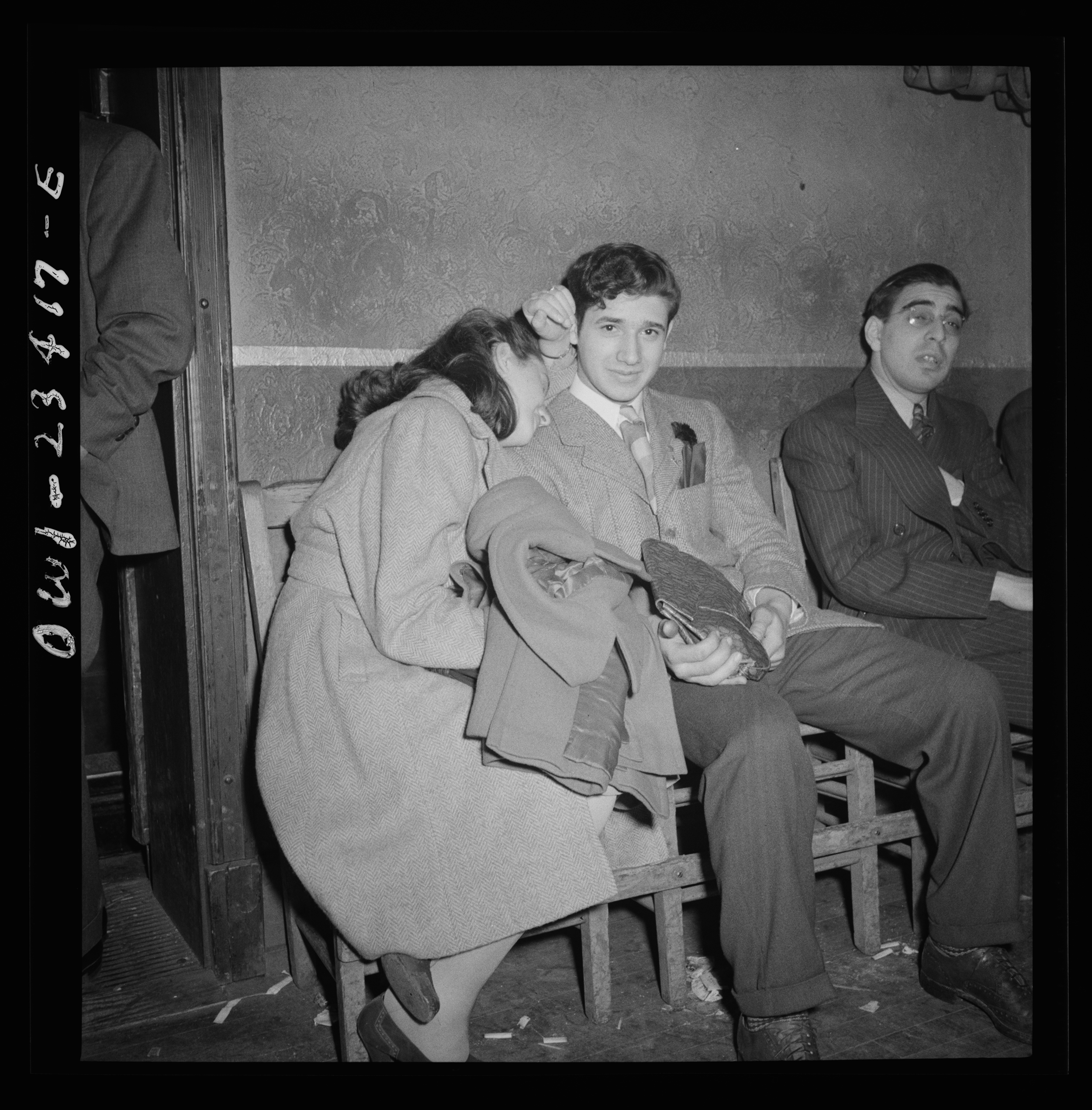
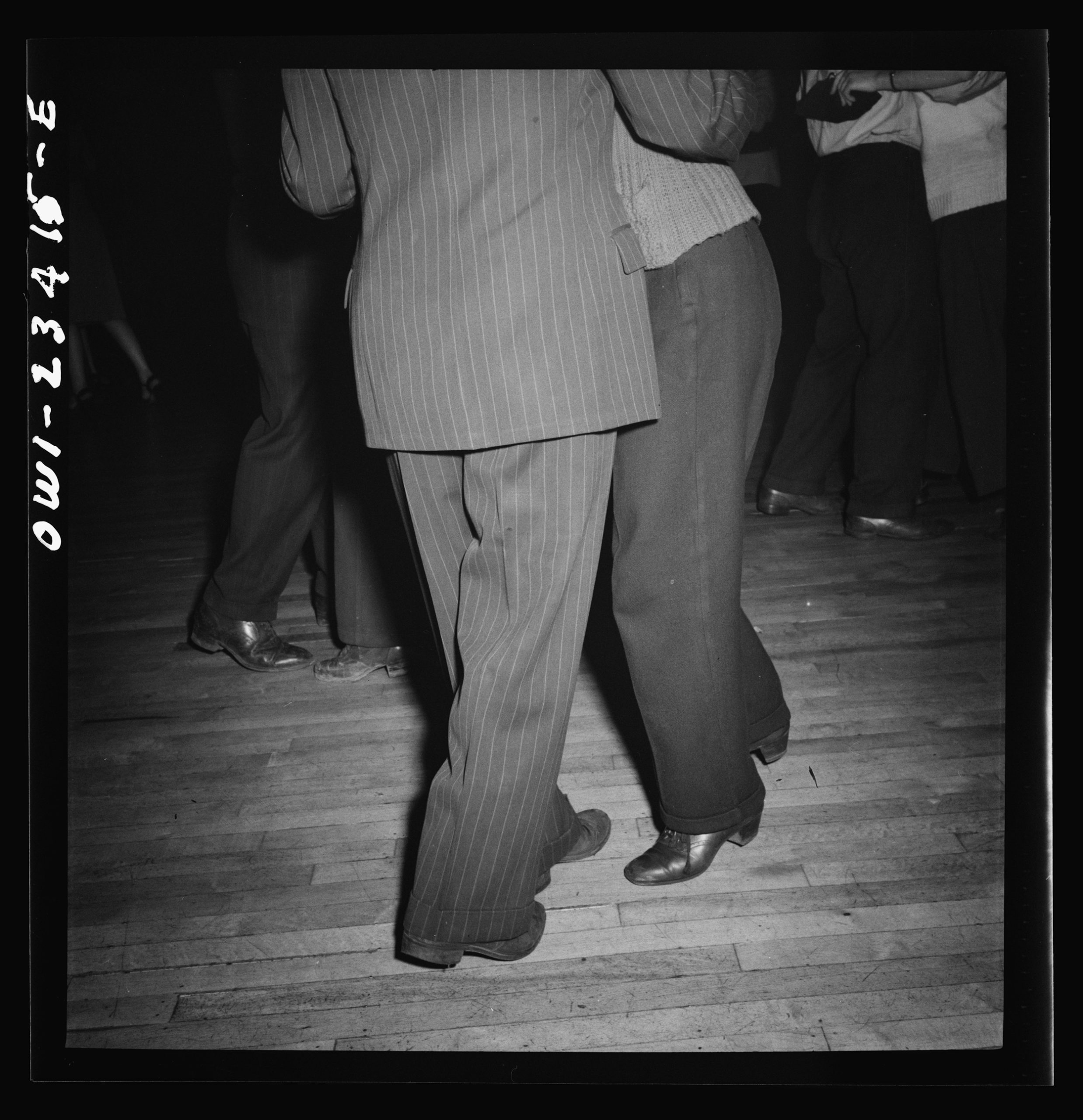
Photographers such as Gordon Parks, Marion Post Wolcott, Russell Lee, and Marjory Collins are not wholly unknown. Indeed, in recent years, Parks has enjoyed a posthumous celebration of a career that moved into film making (the 1971 movie Shaft was his directorial debut) and watercolour painting. However, they — and their prodigious output for the Farm Security Administration — have been marginalized by more than a half century of attention lavished on the more prominent FSA photographers who enjoyed highly visible places in the postwar fine art world. Happily for those interested in exploring the work of the unsung FSA photographers, the Library of Congress has painstakingly digitized virtually all of the negatives in the archives, rendering the collection fully searchable and allowing high resolution of these images, all of which are in the public domain. Moreover, Yale University has built upon this foundation, creating a companion website that allows for both geographic mapping of the FSA photographs and filtering by individual photographer. By making this remarkable visual record widely accessible, we can hope that photographers such as the ones explored briefly in this essay can enjoy the recognition and acclaim they deserve (1).
(1) The Library of Congress collection is known as the Farm Security Administration/Office of War Information Black-and-White Negatives; it can be searched here: https://www.loc.gov/pictures/collection/fsa/. The Yale University site, which has superior search features, can be found at https://photogrammar.yale.edu/
ABOUT THE AUTHOR
Rick Halpern is an historian and photographer based in Toronto. In recent years he has been writing about the history of visual culture, especially photography, and the way it has shaped our understanding of identity and place. His photographic practice focuses on three main themes: urban life, travel, and food.



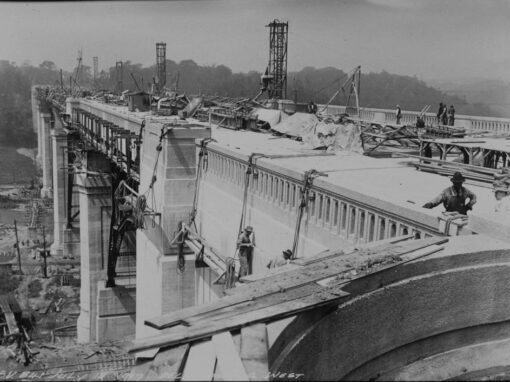
Gary P
February 24, 2021 at 14:00
Wonderful article….thanks for recognizing some of the lesser known photographers and images they made.
Rick
February 26, 2021 at 17:48
Glad you liked it Gary. Stay tuned for future pieces, many of which will highlight unknown or under appreciated photographers
Marco Bruscolini
February 27, 2021 at 17:14
Fantastic article! Thank you so much Rick.
Rick
March 1, 2021 at 03:13
I am so pleased you liked the piece Mrco!
B. D. Colen
March 28, 2021 at 19:44
An excellent piece, but there are a few important points that should be added. The first is that while the work of the FSA photographers is often cited as constituting a high point in documentary photography, it actually is government propaganda, shot for the sole purpose of advancing the New Deal legislative agenda. The FSA photographers worked from detailed shooting scripts, sent to them by Roy Stryker, their editor and boss. While some of the photographers – Lange in particular – shot to the beat of their own drummer, what the trove of images gives us today is what the Roosevelt Administration wanted Americans to see. Yes, it documents certain conditions and situations of the time, but it also ignores it others. As to Black FSA photographers, not only was Parks the first such photographer -hired toward the end of the project’s run, but he was also, I believe, the FSA’s only non-white photographer.
Rick
March 29, 2021 at 17:49
Thanks for this comment. Your points are well taken, but I think dismissing this corpus of work as “government propaganda” is too harsh. Stryker was a hard task master, but the New Deal did not appear particularly coherent in the late 1930s, and no Roosevelt staff member exerted any influence or control over the various activities of the cultural front — plays, music, theatre, and of course photos. A good treatment of this period can be found in John Raeburn, A Staggering Revolution: A Cultural History of Thirties Photography (Urbana: University of Illinois Press, 2006); see also Stuart Kidd, Farm Security Administration Photography, the Rural South, and the Dynamics of Image-making, 1935-1943 (Lewinston, NY: Edwin Mellen Press, 2004).
Christopher CALL Dant
February 14, 2022 at 19:26
Styker’s photography program faced charges that it was simply propaganda for the New Deal.
But it became an indelible record of America and her desperate peoples. Dorothea Lang said it best: “Great images make me feel and care about the people we photograph.” In her images and those of all the FSA photographers, we clearly see those people and their plight, their abject misery, the poverty and pain and sadness that surrounds them day after day. Despite Lange’s words that accompanied her pictures, in these remarkable photographs, we really don’t need words to feel what they felt and experienced. Their faces directly connect us to the unbridled intimacy of a troubled people. Today and for all time, it remains an indelible reminder of America and her brave and proud people that faced the last ditch in their lives. America came through the depression and her land was restored, but through these indelible images, we are connected to our people, and we continue to care and think about them even today.
B. D. Colen
March 29, 2021 at 18:19
Please don’t get me wrong; I am not at all dismissing the work of the FSA photographers. They produced a body of work that really has not be equaled since. I’m so simply saying that we need to remember that they were employed by the government to advance the agenda of the Administration.
Rick
March 30, 2021 at 20:35
Fair enough. I’m just suggesting that the administration really didn’t have a coherent agenda when it came to cultural work and that we are better off thinking more braodly about these artistic creations, placing them in the context of the populist/left popular front…